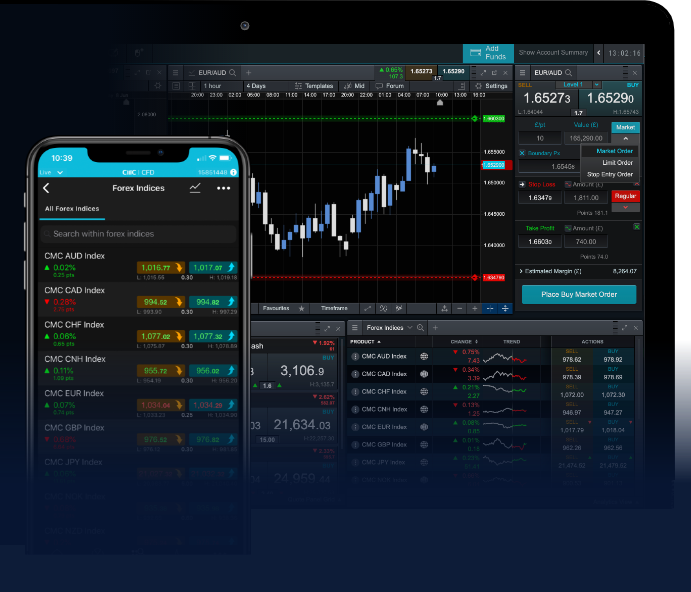
Forex trading, also known as foreign exchange trading, is the process of exchanging one currency for another in the global market. It’s one of the most dynamic and exciting fields in finance, offering participants the potential for high returns. For beginners, however, diving into the world of Forex can be confusing and overwhelming. This article is designed to provide newcomers with a clear and concise overview of Forex trading, complete with essential tips and resources that can help pave the way for success in this thrilling market. To kickstart your journey, you can explore additional resources at forex trading beginners https://trading-bd.com/.
What is Forex Trading?
Forex trading involves the buying and selling of currency pairs. Unlike stock trading, where investors buy shares of a company, Forex traders focus on the relative values of different currencies. Each currency pair, such as EUR/USD or GBP/JPY, reflects the value of one currency against another. The Forex market operates 24 hours a day, five days a week, making it accessible to traders worldwide.
How Does the Forex Market Work?
The Forex market is essentially a decentralized market where participants can trade currencies. Major global banks, financial institutions, corporations, governments, and individual traders participate in this marketplace. Prices in the Forex market are influenced by various factors, including economic indicators, geopolitical events, and market sentiment.
Currency Pairs Explained
Currencies are traded in pairs because one currency’s value is determined relative to another. Here are the main types of currency pairs:
- Major Pairs: These pairs involve the most traded currencies, such as EUR/USD, USD/JPY, and GBP/USD.
- Minor Pairs: These pairs do not include the USD but involve other major currencies, like EUR/GBP or AUD/NZD.
- Exotic Pairs: These pairs consist of a major currency paired with a currency from a smaller or emerging economy, like USD/TRY (Turkish Lira).
Essential Terminology for Beginners
Before diving deeper into Forex trading, it’s crucial to understand some key terms that are commonly used:
- Pip: Short for “percentage in point,” a pip is the smallest price move that a given exchange rate can make based on market convention.
- Leverage: Leverage allows traders to control a large position with a relatively small amount of capital. While it can amplify profits, it can also increase potential losses.
- Spread: The spread is the difference between the bid (selling) price and the ask (buying) price of a currency pair.
- Margin: A margin is the amount of capital required to open a position, which is often a fraction of the total value of the trade.
Developing a Trading Strategy
Successful Forex trading requires a solid trading strategy. Here are some approaches that beginners can consider:
1. Technical Analysis

This approach involves evaluating currency pairs by analyzing statistical trends from trading activity. Traders use charts, indicators, and patterns to make decisions about when to enter or exit trades.
2. Fundamental Analysis
Fundamental analysis involves looking at various economic indicators, such as interest rates, unemployment rates, and GDP growth, to predict future currency movements. News releases can heavily impact currency prices.
3. Price Action Trading
Price action trading involves making decisions based solely on the price movement of a currency pair rather than relying on indicators. This approach is favored by many experienced traders for its simplicity.
Tips for Beginners
Here are some essential tips to help beginners navigate the Forex trading landscape:
- Start with a Demo Account: Most trading platforms offer demo accounts where beginners can practice trading without risking real money. This is an excellent way to gain experience.
- Educate Yourself: Invest time in learning about Forex trading through courses, books, and online resources. Understanding market dynamics is crucial for success.
- Set Realistic Goals: It’s essential to have realistic expectations when starting out. Focus on small and achievable goals, and remember that trading is a marathon, not a sprint.
- Manage Your Risk: Always have a risk management plan in place to protect your capital. This may involve setting stop-loss orders to minimize potential losses.
Choosing the Right Broker
Finding the right Forex broker is a critical step in your trading journey. Look for brokers that are regulated, offer a user-friendly trading platform, competitive spreads, and excellent customer service. Read reviews and compare different brokers’ offerings before making a decision.
Common Mistakes to Avoid
Even the most experienced traders make mistakes. Beginners should be particularly vigilant about the following common pitfalls:
- Overleveraging: While leverage can increase profits, it also magnifies losses. Avoid using excessive leverage that can put your capital at risk.
- Ignoring a Trading Plan: Trading without a plan can lead to impulsive decisions. Always adhere to your strategy and stick to your rules.
- Emotional Trading: Allowing emotions to dictate your trading decisions can lead to poor outcomes. Stay disciplined and stick to your strategy.
Conclusion
Forex trading offers exciting opportunities for those willing to learn and practice. By understanding the fundamentals, developing a trading strategy, and fostering a disciplined mindset, beginners can navigate the Forex market with greater confidence. Remember, success in trading is a journey that requires continuous learning and adaptation. Start slowly, stay patient, and most importantly, enjoy the learning process.
